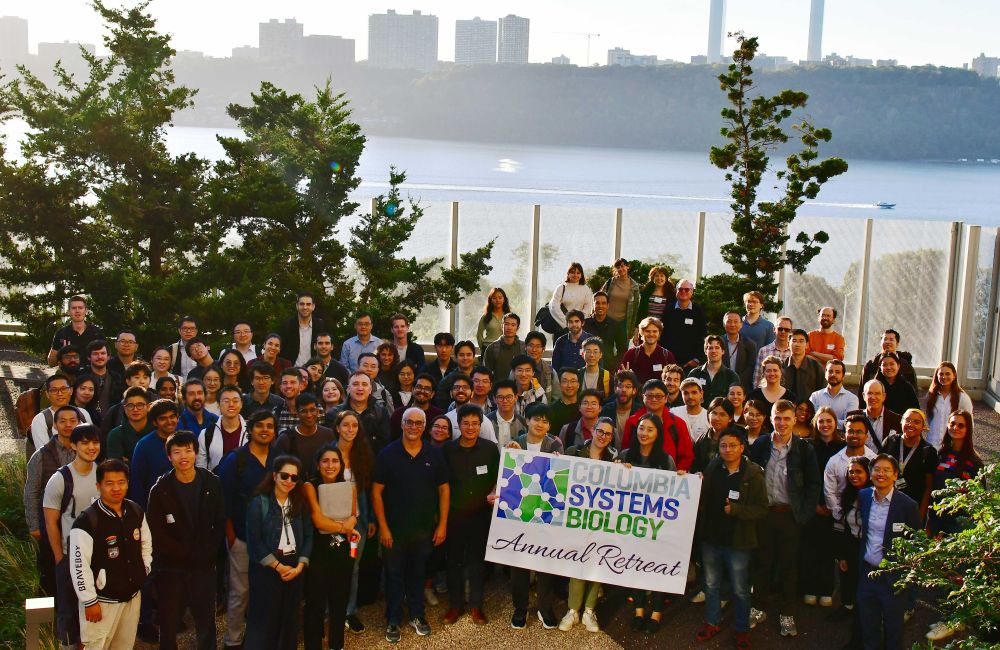
Lab website: https://shahlab.wixsite.com/home
ORCiD: 0000-0002-1186-0626

www.biorxiv.org/content/10.1...
1/n

www.biorxiv.org/content/10.1...
1/n
apply.interfolio.com/177622
Suggested deadline: 12/15/2025.
@columbiasysbio.bsky.social

apply.interfolio.com/177622
Suggested deadline: 12/15/2025.
@columbiasysbio.bsky.social
onlinelibrary.wiley.com/doi/10.1002/...
onlinelibrary.wiley.com/doi/10.1002/...
a 🧵 1/n
Drain: arxiv.org/abs/2511.04820
Strain: direct.mit.edu/qss/article/...
Oligopoly: direct.mit.edu/qss/article/...




a 🧵 1/n
Drain: arxiv.org/abs/2511.04820
Strain: direct.mit.edu/qss/article/...
Oligopoly: direct.mit.edu/qss/article/...

Our study on "Profiling the proteome-wide selectivity of diverse electrophiles" is published in Nature Chemistry.(1/7)
www.nature.com/articles/s41...

Our study on "Profiling the proteome-wide selectivity of diverse electrophiles" is published in Nature Chemistry.(1/7)
www.nature.com/articles/s41...
We explored how evolution shaped the structure–function relationship of the insulin receptor (IR) family using a simplified model — the fruit fly. 🪰
rdcu.be/eM7zG

Study🗒️: https://go.nature.com/4o9oqWn
Episode 🔊: https://bit.ly/3LlRCeo

Study🗒️: https://go.nature.com/4o9oqWn
Episode 🔊: https://bit.ly/3LlRCeo
@columbiaseas.bsky.social @cancerdynamics.bsky.social
🚀Join us to build foundation models that learn & reason about cancer systems, integrating #LLMs #causalAI and multi-modal #genomics. Shape the next-generation of cancer therapies! tinyurl.com/5n7wp8ck

@columbiaseas.bsky.social @cancerdynamics.bsky.social
🚀Join us to build foundation models that learn & reason about cancer systems, integrating #LLMs #causalAI and multi-modal #genomics. Shape the next-generation of cancer therapies! tinyurl.com/5n7wp8ck
This was a big team effort led by
@inesforrest.bsky.social
and in collaboration with AbbVie.

This was a big team effort led by
@inesforrest.bsky.social
and in collaboration with AbbVie.
See preprint for:
— Ensembles of >12000 full-length human proteins
— Analysis of IDRs in >1500 TFs
📜 doi.org/10.1101/2025...
💾 github.com/KULL-Centre/...

See preprint for:
— Ensembles of >12000 full-length human proteins
— Analysis of IDRs in >1500 TFs
📜 doi.org/10.1101/2025...
💾 github.com/KULL-Centre/...
A team effort led by @mehsehret.bsky.social & Anurag Shukla @akhilvaidya.bsky.social! #cryoEM #malaria

A team effort led by @mehsehret.bsky.social & Anurag Shukla @akhilvaidya.bsky.social! #cryoEM #malaria
onlinelibrary.wiley.com/doi/10.1002/...
onlinelibrary.wiley.com/doi/10.1002/...
tinyurl.com/asymmBRAF
The RAS->RAF->MEK->ERK cascade carries mutations in most human cancers. Interestingly, although we have three RAF paralogues (A, B and C), it is the BRAF that is predominantly mutated in cancer patients. (1/10)

tinyurl.com/asymmBRAF
The RAS->RAF->MEK->ERK cascade carries mutations in most human cancers. Interestingly, although we have three RAF paralogues (A, B and C), it is the BRAF that is predominantly mutated in cancer patients. (1/10)

apply.interfolio.com/175284
apply.interfolio.com/175284
Scholarly Communication Is a Research Problem. This Means You.
pracheeac.substack.com/p/scholarly-...

Scholarly Communication Is a Research Problem. This Means You.
pracheeac.substack.com/p/scholarly-...
Preprint: www.biorxiv.org/content/10.1...
Preprint: www.biorxiv.org/content/10.1...
Preprint: www.biorxiv.org/content/10.1...
Exciting opportunity at the Irving Institute for Cancer Dynamics and School of Engineering and Applied Science at Columbia: Associate Research Scientist. Lead pooled CRISPR + Perturb-seq screens to close AI-identified knowledge gaps. Apply apply.interfolio.com/172825
Exciting opportunity at the Irving Institute for Cancer Dynamics and School of Engineering and Applied Science at Columbia: Associate Research Scientist. Lead pooled CRISPR + Perturb-seq screens to close AI-identified knowledge gaps. Apply apply.interfolio.com/172825
www.sciencedirect.com/science/arti...

www.sciencedirect.com/science/arti...

